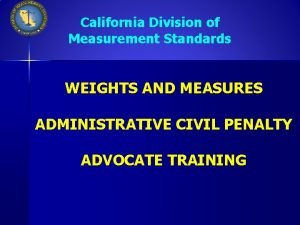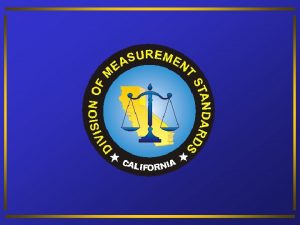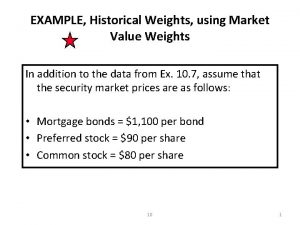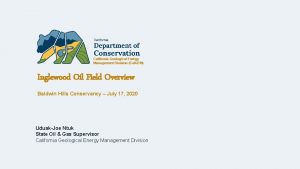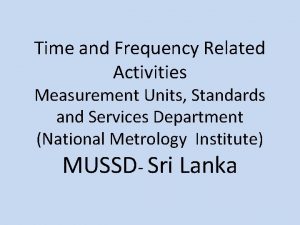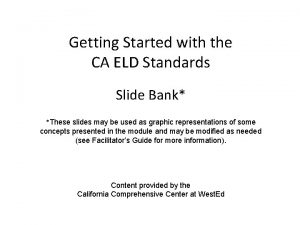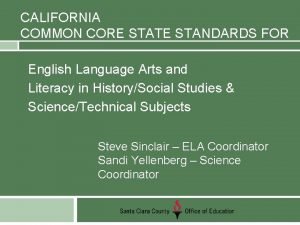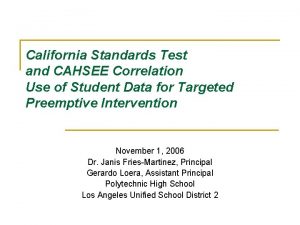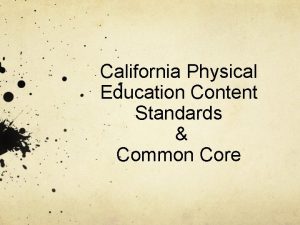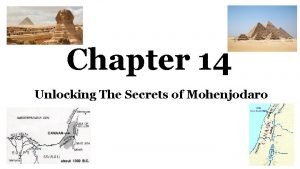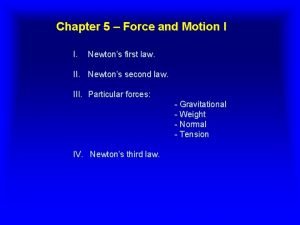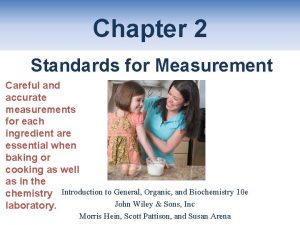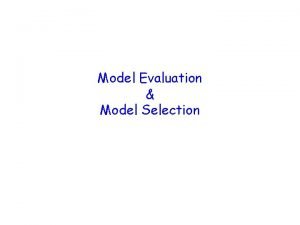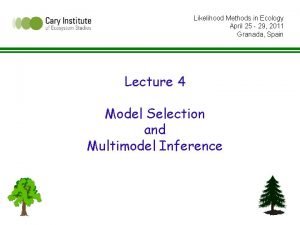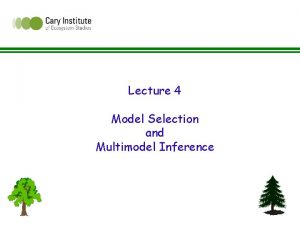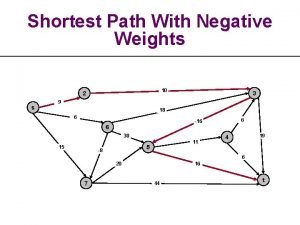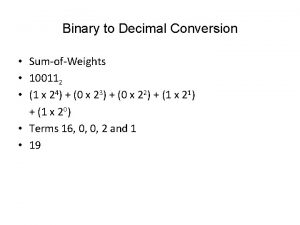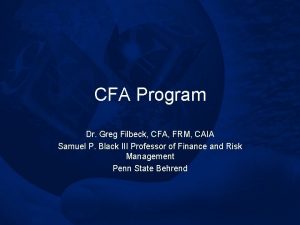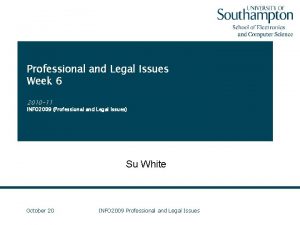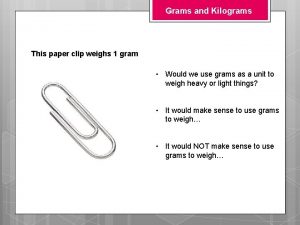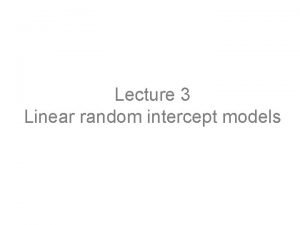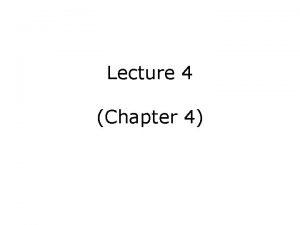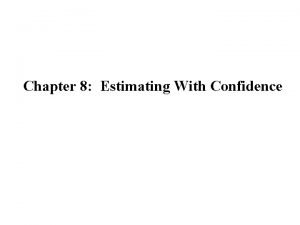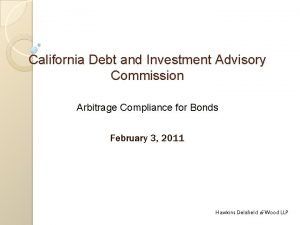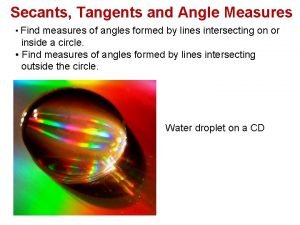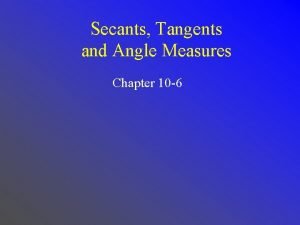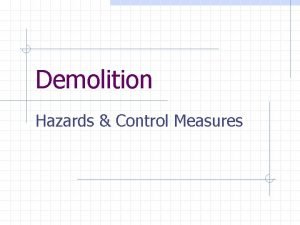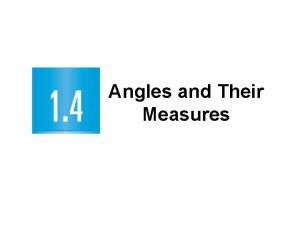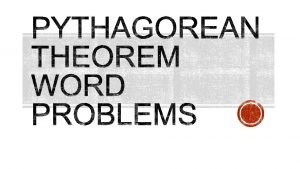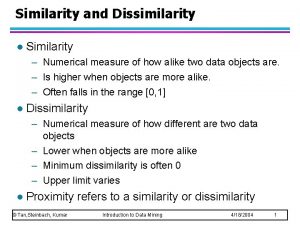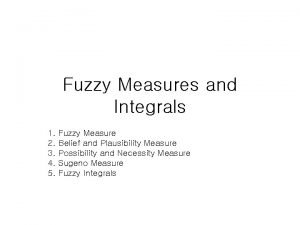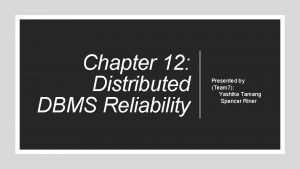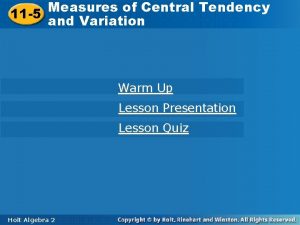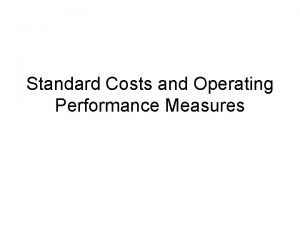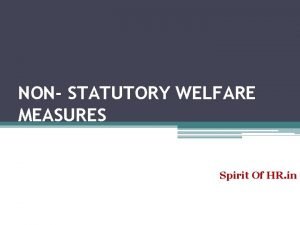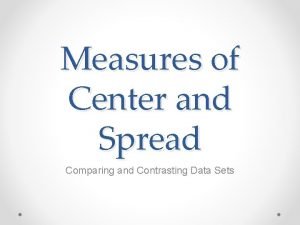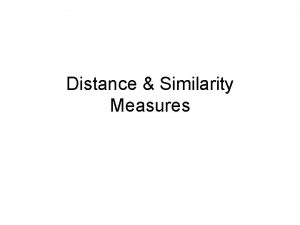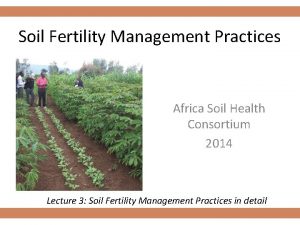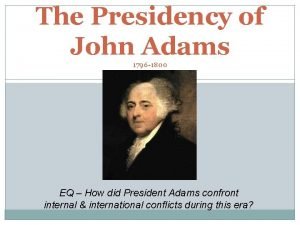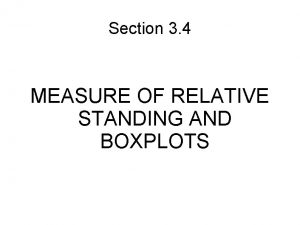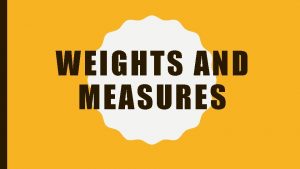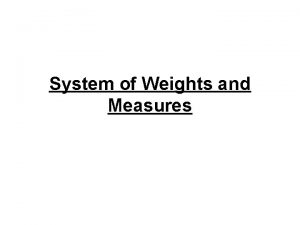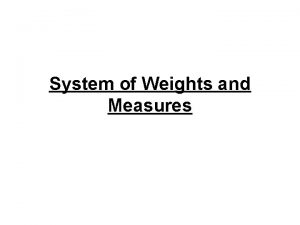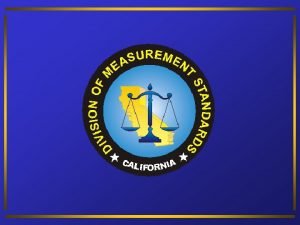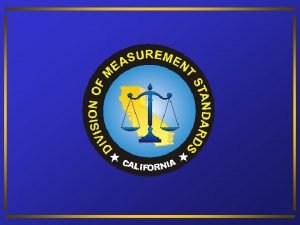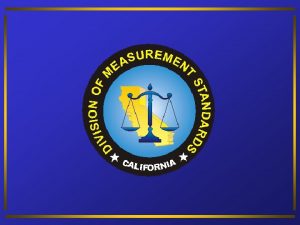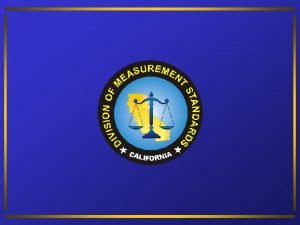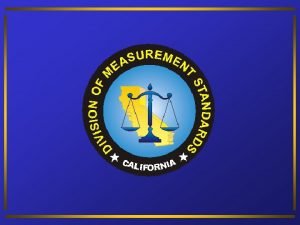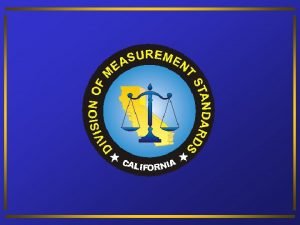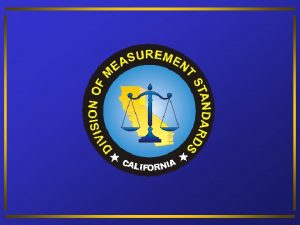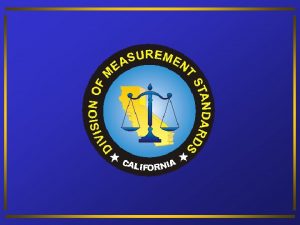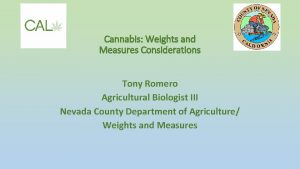California Division of Measurement Standards WEIGHTS AND MEASURES















































































- Slides: 79

California Division of Measurement Standards WEIGHTS AND MEASURES ADMINISTRATIVE CIVIL PENALTY ADVOCATE TRAINING

California Division of Measurement Standards Enforcement History n Prior to 1994 – Notice of Violation – Criminal citation – Long form criminal filing – Civil unfair business practice/unfair competition filing Imposition of penalties is generally the purview of the courts n After 1994 – California Legislature gave Sealers of Weights and Measures the authority to impose administrative civil penalties to handle minor violations up to $1, 000 per violation

California Division of Measurement Standards Authority CA Business and Professions Code, Division 5, Chapter 1, Section 12013 Any sealer shall have the authority, as a public officer, to arrest, without a warrant, any person whenever such officer has reasonable cause to believe that the person to be arrested has, in his presence, violated any provision of this division, the violation of which is declared to be a public offense. CA Business and Professions Code, Division 5, Chapter 1, Section 12015. 3 ØThe sealer may levy civil penalties for violations of this division or a regulation adopted pursuant to this section ØCA Code of Regulations, Title 4, Division 9, Chapter 12, Article 2, “Penalty Guidelines”

California Division of Measurement Standards Administrative Civil Penalty Overview • Imposition of penalties is generally the purview of the courts • California Legislature gave Sealers of Weights and Measures the authority to impose administrative civil penalties for violations of Business and Professions Code, Division 5. • Penalty limited to $1, 000 per violation • Requires timely notification to Respondent of proposed action and reasons • Requires a hearing before an impartial party, if requested • Requires Due Process – confront witnesses, present their side, timely decision, right to appeal decision

California Division of Measurement Standards The Advocate A Starring Role

California Division of Measurement Standards Role of the Advocate Ø Prosecutor in the hearing process Ø Ø Makes an opening statement Presents the case at the hearing

California Division of Measurement Standards Role of the Advocate Ø Questions witnesses, both for the County and the respondent Ø Presents the County’s evidence Ø Summarizes the case and how the evidence proves the alleged violation(s) during the closing statement Ø Ex parte conversations or meetings discussions outside of the hearing – do not engage in these

California Division of Measurement Standards The Supporting Roles Hearing Officer Respondent and Witnesses

California Division of Measurement Standards Role of the Hearing Officer Judge and Jury Ø Determination of the facts in the case Ø Makes the decision based upon the evidence Ø

California Division of Measurement Standards Role of the Hearing Officer Ø Controls the tone of the hearing – ensures that it is informal Ø Provides an adequate record of the hearing Ø Receives relevant, material and competent evidence ØRemains impartial and unbiased

California Division of Measurement Standards Role of the Respondent The defendant or accused party Ø Gives an opening statement Ø Presents their side of the story with evidence Ø

California Division of Measurement Standards Role of the Respondent Questions witnesses, both their own and the county’s Ø Summarizes their evidence during a closing statement Ø

California Division of Measurement Standards Role of the Witnesses • Provides direct evidence of the violation(s) at the hearing • Evidence of facts derived from the five senses – hearing, sight, touch, taste, smell • Testifies about what he/she did, saw, heard, or said

California Division of Measurement Standards Things To Consider

California Division of Measurement Standards BASIC INVESTIGATION CONCEPTS THAT THE ADVOCATE MUST KNOW

California Division of Measurement Standards Who are Investigators? n Peace officers n Public officers n Sworn or not n Private citizens

California Division of Measurement Standards Role of the Investigator n The gatherer of information (facts) n Who evaluates that information to determine if a crime has been committed n Determines who is responsible for the crime.

California Division of Measurement Standards The Basic Steps of an Investigation n The event occurs n You investigate and take notes n You write the report n Others learn about the event from your report

California Division of Measurement Standards What is a Crime? n An act or omission n By a person, firm, corporation, or association n In violation of statutory law n For which there is a punishment

California Division of Measurement Standards Spirit vs. Letter of the Law n Spirit of the law - the intent of the Legislature when the law was created n Letter of the law - the most strict interpretation of the statute

California Division of Measurement Standards Elements of a Crime Those constituent parts of a crime which must be proved by the prosecution (advocate) to sustain a conviction. EXAMPLE: BPC § 12512 – “When the sale of a commodity is based upon a quantity representation either furnished by the purchaser or obtained through the use of equipment supplied by him, the purchaser shall in no case buy the commodity according to any quantity which is less that the true quantity. ” ELEMENTS: • Sale of a commodity • Purchaser provides quantity representation or uses his own equipment to determine quantity • Purchaser buys the commodity in less than the true quantity

California Division of Measurement Standards Due Process v Fifth and Fourteenth Amendments to the United States Constitution v California Constitution – contains similar provisions as the US Constitution

California Division of Measurement Standards Due Process v Extends to every case in which an individual may be deprived of life, liberty or property – criminal, civil, or administrative

California Division of Measurement Standards Due Process The process that, at a minimum, provides a person charged with a crime a • Notice of the charges against them • An opportunity to respond • Review the evidence and obtain full disclosure of the case against them • Opportunity to be heard, to present evidence and to question witnesses

California Division of Measurement Standards Due Process Includes the Respondent’s right to • Request a hearing before an impartial Hearing Officer • Right to legal representation • Right to a timely legal decision, in writing

California Division of Measurement Standards 4 th Amendment to the U. S. Constitution “The right of the people to be secure in their person, house, papers and effects against unreasonable searches and seizures shall not be violated. ”

California Division of Measurement Standards Search and Seizure n n n Search and Seizure are not the same thing Search: An exploration to find evidence Seizure: The taking custody or control of the evidence found in the search

California Division of Measurement Standards Types of Searches n Plain view n Open fields n Public places n Eavesdropping in a public place n Optical aids

California Division of Measurement Standards Four Ways to Legally Search 1. By consent 2. Search warrant 3. Incident to a legal arrest 4. In an emergency to save lives, exigent circumstances

California Division of Measurement Standards Search By Consent n Most Weights and Measures searches are conducted in this manner n A consent search is legal; it is advisable to obtain the consent in writing n From the person in control of the area to be searched n Leave a receipt for items seized n Tag or mark each item for identification

California Division of Measurement Standards Exclusionary Rule n The exclusionary rule requires that any evidence obtained by an officer’s methods that violate a persons constitutional rights be excluded from being used in a criminal prosecution. n Weeks vs. U. S. 1914 Rochin vs. California 1952 Mapp vs. Ohio 1961 n n

California Division of Measurement Standards Fruit of the Poison Tree Doctrine n The exclusionary rule extends to any evidence which was directly or indirectly obtained as a result of the initial unlawful search or seizure. n Illegally seized evidence is inadmissible in court and additional evidence developed from it is also inadmissible.

California Division of Measurement Standards Evidence

California Division of Measurement Standards Evidence Testimony, writings, material objects, or other things presented to prove the existence or non existence of a fact

California Division of Measurement Standards Requirements for evidence v Relevant - must be related to the facts of the case v Material - must have great significance to the facts of the case v Competent - must have been obtained legally and be admissible during the hearing v Maintenance - must be controlled, handled, identified, and stored properly

California Division of Measurement Standards Types of evidence 1) Direct evidence – shows the existence of facts by the witness’ knowledge derived from his / her five senses – the witness’ testimony

California Division of Measurement Standards Types of evidence 2) Real evidence – objects that speak for themselves and do not require explanation – physical things

California Division of Measurement Standards Types of evidence 3) Circumstantial evidence – does not directly prove a fact, but establishes facts that tend to prove certain elements of the case

California Division of Measurement Standards Types of evidence 4) Hearsay evidence – second hand evidence based on the statement of someone else who may have observed the violation

California Division of Measurement Standards Hearsay Exceptions 1. 2. 3. 4. 5. 6. 7. 8. 9. Confessions and admissions Prior statement of witness Business records Public records Judgments Former testimony Declaration against interest Spontaneous, contemporaneous, and dying declarations State of mind or physical state

California Division of Measurement Standards Types of evidence 5) Prima Facie evidence – on its face – accepted as true unless challenged – weights and measures standards (BPC § 12312)

California Division of Measurement Standards Chain of Custody A chain of custody is the method by which tangible evidence is accounted for from seizure to the hearing. The safest chain has the fewest links.

California Division of Measurement Standards Challenges to the Chain of Custody n n The item has no identification The chain has missing information The evidence storage is accessible to many individuals The seal on the container has been tampered with or broken

California Division of Measurement Standards Burden of Proof v v Proof – the effect of evidence, derived from considering it, that leads to reasonable conclusions Burden of proof – Rests with the Advocate

California Division of Measurement Standards of Proof n n Preponderance - more than 50% - for administrative actions and civil actions Beyond a Reasonable Doubt – 100% for criminal actions

California Division of Measurement Standards Statute of Limitations n n Misdemeanor/Infraction – one year from the occurrence of the violation Administrative Civil Penalties – within one year of occurrence (CA CCP § 340)

California Division of Measurement Standards The Notice of Proposed Action NOPA

California Division of Measurement Standards The NOPA must include: • Written notification that the Sealer proposes to assess the Respondent with a penalty for violations of the California Business and Professions Code • The grounds upon which the penalty is based, i. e. , specific BPC sections • Notification that the Respondent can stipulate to the violation(s) and waiver the right to a hearing • How the penalty was amount was determined (based on Table A, CCR § 4802) • The right to review evidence and where it can be reviewed • The right to request a hearing, within 20 days of receipt of the NOPA, and present evidence and questions witnesses • That failure to request a hearing is a waiver to the right to a hearing and appeal of the Sealer’s final decision

California Division of Measurement Standards California Code of Regulations § 4802 “Penalty Guidelines”

California Division of Measurement Standards The NOPA must: Be mailed to the Respondent – certified mail, return receipt requested, suggested but not mandatory • • A copy must be mailed to the Division of Measurement Standards

California Division of Measurement Standards Setting the Stage

California Division of Measurement Standards PREPARING FOR THE HEARING

California Division of Measurement Standards The Advocate must take the time to properly prepare his/her presentation for the hearing. • Review the NOPA and case file to become familiar with the facts • Review the code sections violated to become familiar with the “elements of the crime” • Collect and review the physical evidence • Develop the questions you need to ask to prove the violation(s) • Consider questions you will want to ask the Respondent • Meet with your witness(es) to review your questions and responses – advise your witness(es) to answer honestly and tell the truth • Prepare your exhibits – copies for the Hearing Officer and Respondent

California Division of Measurement Standards • Develop your opening statement – what you intend to prove, what the violation was, why it is a violation and its importance, what the appropriate type and amount of the penalty is pursuant to the CCR • Develop your closing statement - what the evidence is, how it proves the violation, why the violation and proposed penalty is appropriate, what decision you would like the Hearing Officer to make • Develop stipulations that you would like to have the Respondent agree to during the prehearing conference • Prepare a binder containing your opening statement, evidence list, witness list, questions for your witness(es), questions for the Respondent, your “script” for the hearing, your closing statement

California Division of Measurement Standards Hearing Checklist ü ü ü Arrange for a suitable, quiet location for the hearing Obtain – tape recorder, tapes, markers, and other necessary equipment Make sure equipment functions and batteries are fresh

California Division of Measurement Standards Hearing Checklist ü ü ü Make sure there adequate seats for all participants Do you need an interpreter? Can you accommodate the disabled?

California Division of Measurement Standards THE PREHEARING CONFERENCE

California Division of Measurement Standards The Hearing Officer may hold a prehearing conference prior to the hearing for the following reasons: • Greet the parties • Explain the hearing procedures and how the hearing will proceed • Determine if there is a need for an interpreter or reasonable accommodations • Explain the roles of the various parties • Determine what evidence and exhibits will be presented and possibly mark them before the hearing • Develop stipulations that both the Advocate and Respondent agree to so that time is saved having to present those issues during the hearing • Determine the reason(s) for the requested hearing

California Division of Measurement Standards The Show Begins

California Division of Measurement Standards THE HEARING

California Division of Measurement Standards Conduct of the Hearing The Hearing Officer will do the following: § § Start the tape recorder Open the hearing with a statement and brief remarks Read stipulations into the record The Hearing Officer may identify and describe the marked evidence by reading it into the record if it was marked during the prehearing conference

California Division of Measurement Standards Conduct of the Hearing § § Administer the oath to all persons that will testify during the hearing Request opening statements from the Advocate and Respondent

California Division of Measurement Standards Conduct of the Hearing § § Allow the Advocate and Respondent to call witnesses Take the testimony from the witnesses Take the exhibits and permanently mark them so they become part of the record if they have not already been read into the record Allow the Advocate and Respondent to cross examine the witnesses

California Division of Measurement Standards Opening Statement “The opening statement is not proof, not evidence, just a summary of each side’s version of what happened. ” John Grisham - Theodore Boone - Kid Lawyer 2010

California Division of Measurement Standards The Advocate will: • Give an opening statement • Ask the Hearing Officer to take judicial notice of CA Business and Professions Code, Division 5 and the CA Code of Regulations, Title 4, Division 9 • Call witnesses for the Advocate • Ask questions of the Advocate’s witnesses to elicit direct evidence • Introduce the Advocate’s exhibits and physical evidence • Cross examine the Respondent’s witnesses • Give a closing statement

California Division of Measurement Standards Closing Statement The case is summarized to include the alleged violations, the evidence, the justification for the penalty amount, a request for the hearing officer to decide in favor of the presenter.

California Division of Measurement Standards The Respondent will: • Give an opening statement • Call his/her witnesses • Ask questions of his/her witnesses to elicit direct evidence • Introduce his/her exhibits and physical evidence • Cross examine the Advocate’s witnesses • Give a closing statement

California Division of Measurement Standards ØLawyers are not necessary to represent the Respondent, but they may be present ØStrict rules of evidence do not apply in this type administrative hearing

California Division of Measurement Standards Conduct of the Hearing § § § The Hearing Officer may ask questions to clarify things If a question is ambiguous, the Hearing Officer should ask that it be rephrased Request closing arguments / statements from both sides Inform the parties of the expected decision time frame Inform the Respondent of the appeal rights Close the hearing by stating: “The hearing in the matter of _____ v. ______ Department of Weights and Measures is now closed, the time being ___a. m. /p. m.

California Division of Measurement Standards The Decision and Order The Hearing Officer has 60 days after the conclusion of the hearing to issue, in writing, a proposed final Decision and Order. The Sealer will make the final Decision and Order and notify the Respondent A copy of the Decision and Order must be mailed to both the Respondent and the County Sealer of Weights and Measures or State Sealer. The penalty imposed is due and payable within 45 days of the postmark of the Decision and Order. The Decision and Order must include the right to appeal information.

California Division of Measurement Standards REVIEW OF THE CASE PRESENTATION

California Division of Measurement Standards It is advisable for the Advocate to meet with his/her witnesses after the hearing to debrief on what went right and wrong with the presentation, including testimony and evidence. It is advisable for the Advocate to schedule a debriefing with the Hearing Officer after the decision is rendered to discuss the hearing for guidance on the “good, bad, and ugly” of the presentation.

California Division of Measurement Standards AFTER THE DECISION AND ORDER

California Division of Measurement Standards The Respondent accepts the Decision and Order and pays the penalty to the County or State or The Respondent does not accept the Decision and Order and chooses to appeal

California Division of Measurement Standards The Appeal Process

California Division of Measurement Standards The Appeal Process Department of Food and Agriculture Any person who does not request a hearing within the 20 day time frame permitted by regulation may not file an appeal with the Department when the Sealer issues the final decision

California Division of Measurement Standards The Appeal Process Department of Food and Agriculture n n n Respondent may appeal decision to the Secretary within 30 days Must be in writing stating the grounds for appeal Mailed in care of the Secretary to DMS at 6790 Florin Perkins Road, Suite 100, Sacramento, CA 95828

California Division of Measurement Standards Questions?

California Division of Measurement Standards David R. Lazier Assistant Director Division of Measurement Standards Telephone: 916 229 -3044 FAX: 916 229 -3026 Email: dlazier@cdfa. ca. gov
 Department of measurement standards
Department of measurement standards California weights and measures
California weights and measures Target weights vs historical weights
Target weights vs historical weights Abbreviation for tablespoon and teaspoon
Abbreviation for tablespoon and teaspoon Module 7 weights and measurements
Module 7 weights and measurements Concrete construction estimating
Concrete construction estimating Repeated-measures design
Repeated-measures design California department of conservation
California department of conservation Mussd
Mussd Bridging emerging expanding
Bridging emerging expanding California content standards english
California content standards english California content standards english
California content standards english California standards test
California standards test California pe standards
California pe standards Next generation science standards california
Next generation science standards california California state standards physical education
California state standards physical education Short division vs long division
Short division vs long division Short division and long division
Short division and long division Synthetic division examples with answers
Synthetic division examples with answers Synthetic division with polynomials
Synthetic division with polynomials Hard customer defined standards
Hard customer defined standards Unlocking the secrets of mohenjodaro
Unlocking the secrets of mohenjodaro He invented over 80 machines using pulleys and weights
He invented over 80 machines using pulleys and weights The two blocks a and b have weights
The two blocks a and b have weights Fungiability
Fungiability International construction measurement standards
International construction measurement standards Measurement standards laboratory
Measurement standards laboratory Section 2 standards of measurement answer key
Section 2 standards of measurement answer key Ipums weights
Ipums weights Akaike weights
Akaike weights Akaike weights
Akaike weights Akaike weights
Akaike weights Ounces of ice cream in a large milkshake
Ounces of ice cream in a large milkshake Portfolio weights
Portfolio weights Portfolio weights
Portfolio weights Scale ticket weights
Scale ticket weights Tramp steamer problem
Tramp steamer problem 1101 binary to decimal
1101 binary to decimal Multiplicative weights update algorithm
Multiplicative weights update algorithm Comparing weights
Comparing weights Greg filbeck
Greg filbeck Bessaddison weights
Bessaddison weights Paper clip weight
Paper clip weight Xtreg weights
Xtreg weights Canada egg grades
Canada egg grades Xtreg weights
Xtreg weights Suppose your class is investigating the weights of snickers
Suppose your class is investigating the weights of snickers Progress and performance measurement and evaluation
Progress and performance measurement and evaluation Progress and performance measurement and evaluation
Progress and performance measurement and evaluation California map to inclusion and belonging
California map to inclusion and belonging California finfish and shellfish identification book
California finfish and shellfish identification book Early care and education workforce registry
Early care and education workforce registry California council on gerontology and geriatrics
California council on gerontology and geriatrics California debt and investment advisory commission
California debt and investment advisory commission California debt and investment advisory commission
California debt and investment advisory commission Finding segment lengths find the value of x
Finding segment lengths find the value of x Secant tangent angle
Secant tangent angle Tangent tangent angle
Tangent tangent angle Measures to correct excess and deficient demand
Measures to correct excess and deficient demand Liceo scientifico onesti fermo
Liceo scientifico onesti fermo Tom minka
Tom minka Cdm demolition
Cdm demolition Angles and their measures
Angles and their measures 7.4.7 - quick check: angle measures and segment lengths
7.4.7 - quick check: angle measures and segment lengths A suitcase measures 24 inches long and 18 inches high
A suitcase measures 24 inches long and 18 inches high Numerical measure of how alike two data objects are
Numerical measure of how alike two data objects are Belief and plausibility measures in fuzzy
Belief and plausibility measures in fuzzy Distributed reliability protocols
Distributed reliability protocols Purpose of measures of central tendency
Purpose of measures of central tendency Measures of central tendency and variation
Measures of central tendency and variation Standard cost and operating performance measures
Standard cost and operating performance measures Statutory and non statutory welfare measures
Statutory and non statutory welfare measures Measures of center and spread worksheet
Measures of center and spread worksheet Say first for heaven hides nothing from the view
Say first for heaven hides nothing from the view Similarity and dissimilarity measures in data mining
Similarity and dissimilarity measures in data mining Credit control measures by rbi
Credit control measures by rbi Measures a module’s scope and processing characteristics.
Measures a module’s scope and processing characteristics. Africa soil health consortium
Africa soil health consortium What measures were contained in the alien and sedition acts
What measures were contained in the alien and sedition acts Measures of relative standing and boxplots
Measures of relative standing and boxplots
